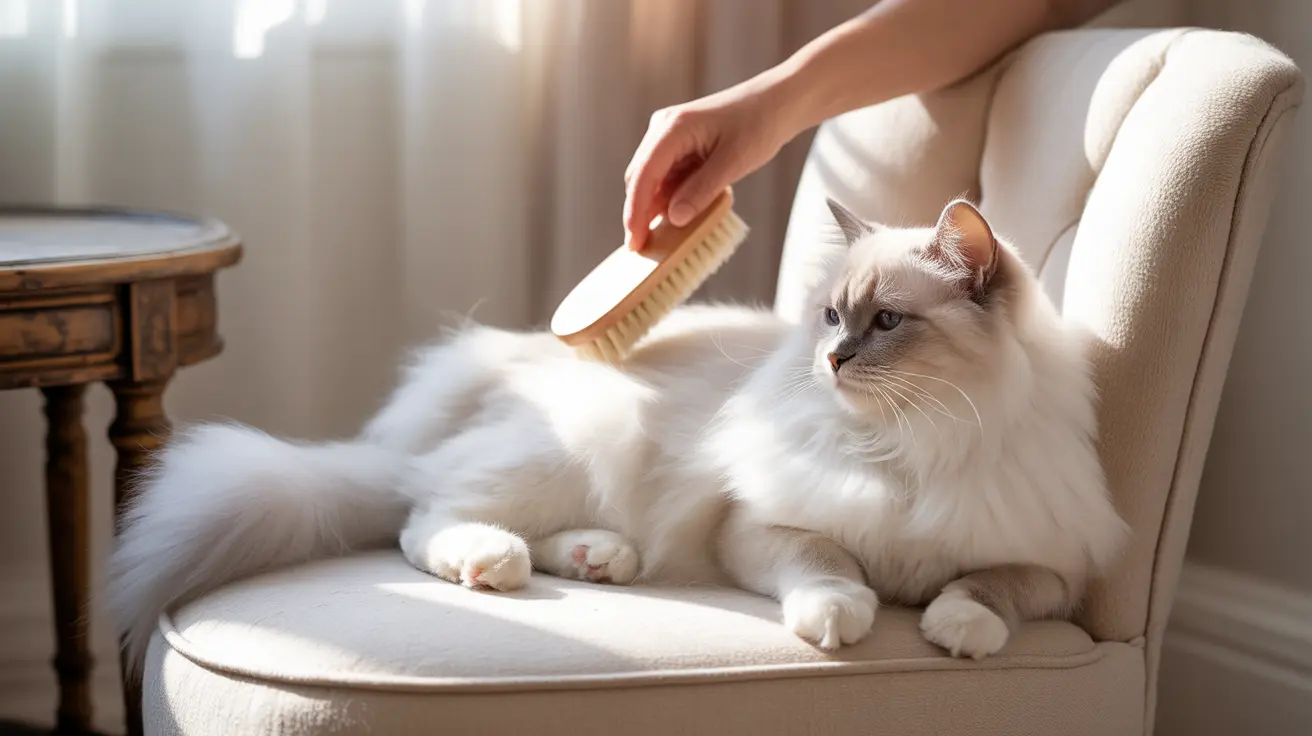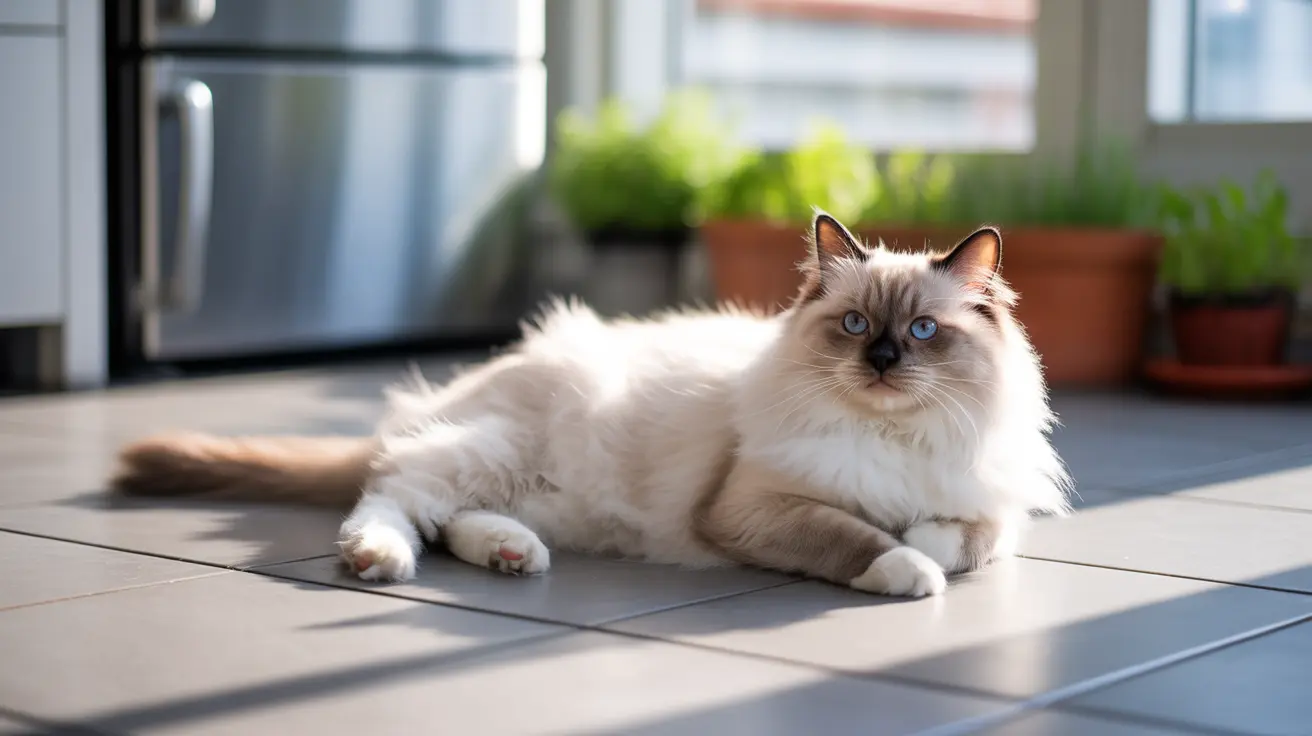Managing Heart Disease in Cats: A Complete Guide to Diagnosis, Treatment, and Long-Term Care
Heart disease in cats affects millions of feline companions worldwide, yet it often goes undetected until advanced stages due to cats' remarkable ability to hide symptoms. Managing heart disease in cats requires a comprehensive understanding of the condition, early recognition of warning signs, and lifelong commitment to veterinary care and treatment protocols. Unlike humans or dogs, cats rarely cough when experiencing heart problems, making detection particularly challenging for pet owners.
The feline heart is a remarkably efficient organ, beating approximately 160 times per minute at rest and accelerating to over 250 beats during active periods. This small but hardworking muscle can be affected by various conditions, with approximately 10% of feline heart diseases being congenital (present at birth) while the majority are acquired throughout the cat's lifetime. Understanding these conditions and their management is crucial for maintaining your cat's quality of life and extending their lifespan when heart disease is diagnosed.
This comprehensive guide will explore the various types of heart disease affecting cats, from the most common hypertrophic cardiomyopathy to rare congenital defects, while providing practical insights into diagnosis, treatment options, dietary management, and long-term care strategies that can help your feline companion live comfortably with heart disease.
Understanding Feline Heart Disease: Types and Causes
Heart disease in cats encompasses both congenital conditions present at birth and acquired diseases that develop over time. Congenital heart diseases, while rare with less than 1% frequency, include serious conditions such as atrial and ventricular septal defects, atrioventricular valve dysplasia, patent ductus arteriosus (PDA), aortic stenosis, pulmonic stenosis, tetralogy of Fallot, endocardial fibroelastosis, and peritoneopericardial diaphragmatic hernia. Early detection of these conditions is critical, as some can be surgically corrected, significantly improving the cat's prognosis.
The majority of feline heart diseases are acquired conditions, primarily affecting the heart muscle through various forms of cardiomyopathy. These adult-onset diseases often develop gradually and can remain undetected for extended periods, making regular veterinary examinations essential for early identification and management.
The Four Main Types of Cardiomyopathies
Cardiomyopathies represent the most common category of heart disease in cats, with four distinct types affecting feline patients. Hypertrophic cardiomyopathy (HCM) stands as the most frequently diagnosed form, characterized by abnormal thickening of the heart muscle, particularly the walls of the left ventricle. This thickened muscle becomes increasingly stiff and less efficient at pumping blood, potentially leading to blood backing up into the lungs and causing congestive heart failure.
Dilated cardiomyopathy (DCM) presents the opposite problem, featuring enlarged heart chambers with thin, weakened walls that cannot effectively pump blood throughout the body. This condition was once commonly linked to taurine deficiency in commercial cat foods, but improvements in feline nutrition have made this cause largely preventable through taurine-supplemented diets.
Restrictive cardiomyopathy (RCM), while less common, occurs when the heart muscle becomes stiff due to fibrosis, severely impairing the heart's ability to fill and pump effectively. The fourth type, arrhythmogenic right ventricular cardiomyopathy (ARVC), affects the heart's electrical system and can cause dangerous irregular heartbeats.
Recognizing the Warning Signs: Early Detection Saves Lives
One of the greatest challenges in managing heart disease in cats lies in recognizing the early warning signs, as cats naturally mask symptoms of illness. Unlike dogs or humans with heart disease, cats rarely develop a cough, making detection more difficult for pet owners. The subtle nature of feline heart disease symptoms means that by the time obvious signs appear, the condition may already be in advanced stages.
Key symptoms that warrant immediate veterinary attention include poor appetite and unexplained weight loss, which often represent the earliest indicators of heart problems. Lethargy and decreased activity levels, while sometimes attributed to normal aging, can signal developing heart disease. Changes in breathing patterns, including increased respiratory rate or visible effort while breathing, should never be ignored.
Critical Emergency Signs
Certain symptoms require immediate emergency veterinary care, as they may indicate life-threatening complications. Sudden collapse or fainting episodes can signal severe heart rhythm abnormalities or inadequate blood flow to the brain. Perhaps most critically, sudden hind-leg paralysis accompanied by pain, cold limbs, and distress indicates arterial thromboembolism—a serious complication where blood clots block circulation to the limbs.
Rapid or labored breathing, especially when the cat is at rest, suggests fluid accumulation in the lungs due to heart failure. Bluish coloration of the gums or tongue indicates poor oxygen circulation and requires immediate medical intervention. Any combination of these symptoms should prompt an emergency veterinary visit, as prompt treatment can significantly improve outcomes.
Comprehensive Diagnosis: The Foundation of Effective Treatment
Accurate diagnosis forms the cornerstone of successfully managing heart disease in cats, as different types of cardiomyopathy require distinctly different treatment approaches. Medications that benefit one form of heart disease can actually harm cats with other types, making precise diagnosis absolutely critical for safe and effective treatment.
The diagnostic process begins with a thorough physical examination, during which veterinarians listen carefully for heart murmurs or abnormal heart sounds that may indicate structural problems. However, it's important to note that not all cats with heart disease develop audible murmurs, and some healthy cats may have innocent murmurs, making additional testing essential for accurate diagnosis.
Advanced Diagnostic Tools
Electrocardiography (ECG) plays a crucial role in detecting irregular heart rhythms and electrical abnormalities that may accompany heart disease. This test helps identify arrhythmias that could contribute to symptoms or indicate specific types of cardiomyopathy. Chest X-rays provide valuable information about heart size and shape, while also revealing fluid accumulation in the lungs that suggests heart failure.
Blood tests serve multiple purposes in diagnosing heart disease, including measurement of cardiac biomarkers like NT-proBNP, which can detect both subclinical and clinical heart disease. These tests also evaluate kidney function and thyroid levels, as both kidney disease and hyperthyroidism can significantly impact heart health and influence treatment decisions.
Echocardiography, or cardiac ultrasound, represents the gold standard for diagnosing and classifying heart disease in cats. This non-invasive imaging technique provides detailed visualization of heart structure and function, allowing veterinarians to differentiate between various types of cardiomyopathy and assess disease severity. Echocardiography also enables monitoring of disease progression and treatment response over time.
Treatment Strategies: Tailored Approaches for Different Conditions
Managing heart disease in cats requires individualized treatment plans that address the specific type of cardiomyopathy, disease severity, and any concurrent health conditions. Treatment goals focus on reducing the heart's workload, managing symptoms, preventing complications, and improving quality of life. While most forms of heart disease cannot be cured, appropriate medical management can help cats live longer, more comfortable lives.
Medication selection depends heavily on the specific type of heart disease diagnosed. Diuretics, particularly furosemide, help reduce fluid overload and pulmonary congestion in cats with heart failure. ACE inhibitors such as enalapril and benazepril work to reduce blood pressure and decrease the heart's workload, while beta blockers like atenolol help control heart rate and provide antiarrhythmic effects.
Specialized Cardiac Medications
Pimobendan represents a newer class of cardiac medication that enhances heart muscle contractility while also providing vasodilation benefits. This medication has shown particular promise in managing certain types of heart disease in cats. For cats at risk of blood clot formation, anticoagulant medications such as clopidogrel or aspirin may be prescribed to prevent the life-threatening complication of arterial thromboembolism.
In cases where taurine deficiency contributes to dilated cardiomyopathy, taurine supplementation becomes a critical component of treatment. This amino acid is essential for proper heart function, and addressing deficiency can sometimes lead to significant improvement in heart function and overall health.
The Critical Role of Taurine in Feline Heart Health
Taurine stands as one of the most important nutrients for maintaining feline heart health, with deficiency historically representing a major cause of dilated cardiomyopathy in cats. This essential amino acid cannot be synthesized in adequate quantities by cats, making dietary intake absolutely crucial for cardiac function. The discovery of taurine's importance in feline nutrition led to mandatory supplementation in commercial cat foods, dramatically reducing the incidence of taurine-deficient cardiomyopathy.
Cats require significantly higher levels of taurine than many other animals, with requirements ranging from 25-50 mg per day for adult cats. Natural sources of taurine include muscle meat, particularly heart tissue, fish, and other animal proteins. Commercial cat foods now contain added taurine to meet these requirements, but cats fed inappropriate diets or those with certain medical conditions may still develop deficiency.
Signs of taurine deficiency can include progressive weakness, dilated cardiomyopathy, retinal degeneration, and reproductive problems. When taurine-deficient cardiomyopathy is diagnosed early and appropriate supplementation is provided, some cats may experience significant improvement in heart function, making this one of the few potentially reversible forms of heart disease in cats.
Nutritional Management: Supporting Heart Health Through Diet
Proper nutrition plays a vital role in managing heart disease in cats, with dietary modifications often forming an essential component of comprehensive treatment plans. Maintaining optimal body weight is crucial, as both obesity and excessive weight loss can negatively impact heart function and overall health outcomes.
A balanced diet containing adequate taurine remains fundamental for all cats, but becomes even more critical for those with diagnosed heart disease. While most commercial cat foods now contain sufficient taurine, cats with heart disease may benefit from foods specifically formulated for cardiac support, which often contain enhanced levels of this essential amino acid along with other heart-healthy nutrients.
Sodium Considerations and Dietary Restrictions
Sodium restriction may be recommended for cats with certain types of heart disease, particularly those with hypertension or signs of fluid retention. However, severe sodium restriction should be approached cautiously in cats, as they may refuse to eat foods that are too bland, leading to dangerous weight loss and nutritional deficiencies.
Working with veterinarians to identify appropriate therapeutic diets or make gradual dietary modifications can help ensure cats receive proper nutrition while supporting heart health. Some cats may benefit from frequent, smaller meals to reduce the cardiac workload associated with digestion, while others may require appetite stimulants if heart disease affects their desire to eat.
Breed-Specific Risks and Genetic Considerations
Certain cat breeds show increased predisposition to specific forms of heart disease, with genetic factors playing significant roles in disease development. Maine Coon and Ragdoll cats face particularly high risks for hypertrophic cardiomyopathy due to specific genetic mutations that have been identified and can be tested for in breeding programs.
Persian cats also show increased susceptibility to hypertrophic cardiomyopathy, while Siamese cats may be more prone to dilated cardiomyopathy. Understanding breed-specific risks allows for more targeted screening and earlier detection of heart disease in susceptible cats.
Genetic testing for known mutations associated with cardiomyopathy is available for some breeds, enabling breeders to make informed decisions and pet owners to implement earlier screening protocols. However, it's important to note that genetic testing cannot identify all forms of heart disease, and regular veterinary examinations remain essential regardless of test results.
Long-Term Management and Monitoring
Successfully managing heart disease in cats requires lifelong commitment to regular veterinary monitoring and medication management. Cats with diagnosed heart disease typically need recheck examinations every 3-6 months, with more frequent visits during medication adjustments or if symptoms worsen.
Regular echocardiographic monitoring helps track disease progression and treatment response, allowing for timely adjustments to medication protocols. Blood tests monitor kidney function and other parameters that can be affected by heart medications, ensuring treatments remain safe and effective over time.
Medication Administration and Monitoring
Many heart medications require precise timing and dosing, making medication compliance crucial for treatment success. Pet owners should work closely with veterinarians to understand proper administration techniques and recognize potential side effects. Some medications may interact with other treatments, making it essential to inform veterinarians about all supplements or medications being given.
Monitoring for medication side effects includes watching for changes in appetite, energy levels, breathing patterns, or urination habits. Any concerning changes should be reported to the veterinary team promptly, as medication adjustments may be necessary to maintain optimal treatment balance.
Emergency Complications: Arterial Thromboembolism
Arterial thromboembolism (ATE) represents one of the most serious complications of feline heart disease, occurring when blood clots form in the heart and subsequently block blood flow to critical areas, most commonly the hind legs. This condition causes sudden, severe pain, paralysis, and cold limbs, requiring immediate emergency veterinary care.
Cats experiencing arterial thromboembolism may cry out in pain, show sudden inability to use their hind legs, and exhibit signs of distress. The affected limbs typically feel cold to the touch and may appear pale or bluish due to lack of blood circulation. This medical emergency requires aggressive treatment focusing on pain management, supportive care, anticoagulation therapy, and addressing the underlying heart disease.
Prevention of arterial thromboembolism involves managing the underlying heart disease and, in some cases, using anticoagulant medications in cats at high risk. However, the decision to use these medications must balance the risk of clot formation against the potential for bleeding complications.
Lifestyle Adaptations for Heart-Healthy Cats
Cats with heart disease benefit from environmental modifications and lifestyle adaptations that reduce stress and support overall health. Avoiding excessive stress and limiting strenuous activity can help reduce the heart's workload and prevent symptom exacerbation.
Creating a calm, comfortable environment with easy access to food, water, and litter boxes can help cats with heart disease maintain their quality of life. Some cats may benefit from raised food and water dishes to reduce the effort required for eating and drinking.
Temperature extremes should be avoided, as both excessive heat and cold can place additional stress on the cardiovascular system. Providing comfortable resting areas and ensuring adequate ventilation can help cats with heart disease remain comfortable throughout different seasons.
Prognosis and Quality of Life Considerations
The prognosis for cats with heart disease varies significantly depending on the specific type of condition, severity at diagnosis, and individual response to treatment. Cats with subclinical cardiomyopathy may live for years with appropriate monitoring and care, while those developing clinical signs of heart failure or complications like arterial thromboembolism face more guarded prognoses.
Quality of life considerations play crucial roles in treatment decisions, with the goal being to maintain comfortable, enjoyable lives for affected cats. Regular assessment of appetite, activity levels, breathing comfort, and overall demeanor helps guide treatment adjustments and end-of-life decisions when necessary.
Many cats with heart disease continue to enjoy good quality of life for extended periods when provided with appropriate medical management and supportive care. Open communication with veterinary teams about treatment goals, expectations, and quality of life concerns helps ensure that management plans align with both medical recommendations and family preferences.
Frequently Asked Questions
- What are the earliest signs of heart disease in cats that I can watch for at home?
The earliest signs include subtle changes in appetite and activity levels, increased sleeping, reduced interest in play, and gradual weight loss. Unlike dogs, cats rarely cough with heart disease, so respiratory changes may manifest as slightly faster breathing at rest or mild difficulty breathing during normal activities. - Can heart disease in cats be prevented through diet and lifestyle changes?
While genetic forms of heart disease cannot be prevented, maintaining proper nutrition with adequate taurine, keeping cats at optimal weight, managing stress, and addressing underlying conditions like hyperthyroidism can reduce risks. Regular veterinary examinations are crucial for early detection, especially in predisposed breeds. - How long can cats live with heart disease, and what factors affect their prognosis?
Cats with subclinical heart disease may live normal lifespans with proper monitoring, while those with clinical symptoms typically survive several months to a few years with treatment. Prognosis depends on the type of heart disease, severity at diagnosis, response to treatment, and development of complications like blood clots or heart failure. - Are there any over-the-counter supplements that can help cats with heart disease?
Taurine supplementation may be beneficial, particularly for cats with dilated cardiomyopathy, but should only be given under veterinary guidance. Omega-3 fatty acids may provide some cardiovascular benefits, but all supplements should be discussed with your veterinarian, as they can interact with prescription heart medications. - What should I do if I suspect my cat is having a heart-related emergency?
Seek immediate veterinary care if you notice sudden difficulty breathing, collapse, fainting, sudden paralysis (especially of hind legs), extreme lethargy, or pale/blue gums. Arterial thromboembolism, which causes sudden hind leg paralysis and pain, is a life-threatening emergency requiring immediate treatment. - How often should cats with heart disease see the veterinarian for monitoring?
Cats with diagnosed heart disease typically need examinations every 3-6 months, with more frequent visits during medication adjustments or symptom changes. Regular echocardiograms help monitor disease progression, while blood tests ensure medications remain safe and effective for kidney function and other parameters. - Can cats with heart disease still live normal, happy lives?
Many cats with heart disease maintain good quality of life for extended periods with proper medical management. While activity levels may need to be modified and medications administered regularly, cats can still enjoy normal behaviors like playing, eating, and socializing when their condition is well-controlled through veterinary care.
Conclusion
Managing heart disease in cats requires a comprehensive approach combining accurate diagnosis, appropriate medical treatment, nutritional support, and ongoing monitoring. While heart disease can be a serious condition, early detection and proper veterinary care can significantly improve outcomes and extend quality life for affected cats. The key lies in recognizing subtle warning signs, working closely with veterinary professionals to develop individualized treatment plans, and maintaining consistent long-term care protocols.
Success in managing feline heart disease depends on understanding that each cat's needs are unique, treatments must be tailored to specific conditions, and regular monitoring is essential for optimal outcomes. With dedication to proper care and veterinary guidance, many cats with heart disease can continue to live comfortable, fulfilling lives while receiving the specialized attention their condition requires. Pet owners who remain vigilant for symptoms, compliant with treatment recommendations, and proactive about preventive care provide their feline companions with the best possible chances for positive long-term outcomes despite heart disease diagnosis.






